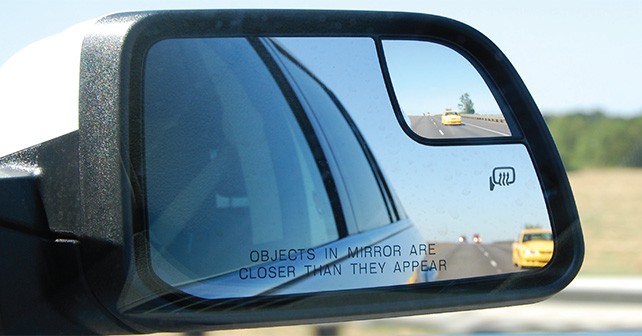
Of all the holy books in the world, the Bible is the most widely distributed. With hundreds of millions of copies published in over 2,400 languages, it’s fair to say most people will have read from the Bible at some point. Which makes me wonder why people drive so badly.
Don’t worry – I’m not going to get all “preachy” on you, but if people have read the book of Matthew, they’d have found the golden rule of motoring. Okay, it’s actually the golden rule of life, but it applies especially well to motoring.
Matthew 7:12 – “All things, therefore, that you want men to do to you, you must also do to them.” It’s simple, really. Similarly, as Mahatma Gandhi said, “Be the change you wish to see in the world.”
So, how hard is it for us to show a bit of courtesy when we’re driving? Clearly, it’s extremely difficult, because what I see when I drive around is utterly ridiculous.
Road rage would be nearly abolished if all we did was use our mirrors. Yes, those shiny, reflective things that are dotted around the car, which help you to see what’s going on behind you. Some drivers seem to think they’re an optional accessory because you can watch them looking dead ahead for minutes at a time and never once check their mirrors. As a rule of thumb, you should be checking them every five to eight seconds. Do that and you’ll be able to see that car moving up your backside. But it’s what should be done next that prevents someone from pulling out a crowbar and clobbering your windscreen – if someone’s behind you, move over.
Think about it: If you were coming up behind someone and you want to get past, then you’d appreciate them seeing you and pulling across, right? Then show the same courtesy. Check your mirrors and respond to the events happening aft of you.
Which brings me to another point – indicators. As the name implies, they’re for indicating what you’d like to do. If you’re going to change lanes, leave a roundabout, or turn at an intersection, then let people know that’s what your intention is. You’d welcome another driver’s indication of their intention, so why not do the same for them? It’s not like it’s massive effort, either. Click. Done. Now, how hard was that?
Driving calls for planning – thinking about what you want to do and where you want to go. Pilots put hours of planning into a flight and there’s hardly another plane near them. When we hit the road there are hundreds, even thousands, of other vehicles we have to deal with, so rather than driving randomly, let’s start thinking about our next moves.
When merging, think about how the cars are moving nearer each other. If you think about a zipper, then the whole experience is a lot smoother. First one, then the other, then the next one, then the other. If their nose is in front, then they have right of way. If we all merge properly, traffic jams would be halved.
We’re all on this planet together, and we all share the roads. Everyone has as much right to be there as we do. A bit of thought for others goes a very long way toward our roads being a bearable place to spend some time.
A little bit of courtesy won’t just brighten up someone else’s day – it’ll brighten up yours, too.























Write your Comment